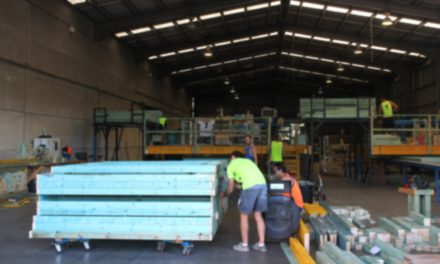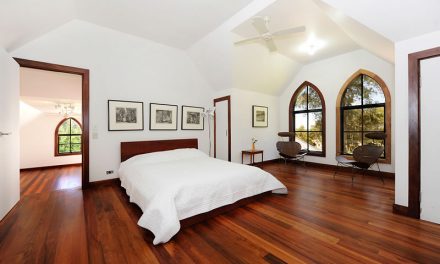The trees had sprouted from seeds tucked within pine cones collected from the forests that Adrianus (Adrian) de Bruin had roamed since childhood, and as each tiny plant took root, a bold business vision grew.
Adrian was nine years old when his family immigrated to Australia from the Netherlands in 1955. After landing in Fremantle, WA, they settled in the tiny timber town of Nangwarry in the heart of south-eastern South Australia’s (SA) forest lands. The uncertainty of post-war Europe was swapped for boyhood adventures beneath the canopy of towering pines surrounding his new home. Money was scarce, with the family using milk crates for furniture, but this was the land of opportunity, where the distinct scent of pine pierced the air.
It’s hardly surprising that Adrian found work in his own backyard as an apprentice fitter and turner with the Woods and Forests Department. It was sadly short-lived, with his boss suggesting he was wasting his talents. Privately, he was told he would never make it in the timber industry.
A new job at Coles gave him what he described as “the best management training ever received”, and he followed it up with two years in the Army Reserves before returning to Woods and Forests to work as a forestry technical officer at Tantanoola and Mount Burr.
Now married with a young family, the home-grown seedlings were a side business operating out of a large shed on a newly-bought property at Millicent, SA. Adrian wasn’t the only one to see their potential, with Melbourne businessman Geoffrey Manners buying land in Penola for him to plant and manage on his behalf.
The seed was planted, and the private company, South East Afforestation Services (SEAS), was established in 1978. It was listed as a public company on the Australian Stock Exchange in 1984 after a somewhat delayed launch; the same day Adrian decided to publicly float the business, his bank delivered a shock blow by withdrawing its support.
“He spent this day wearing out the pavement on Collins Street in Melbourne trying to find a new financial backer with little success until he walked into Elders and met with prominent businessman John Elliot,” son Scott de Bruin explains. “John gave Dad his support and backed the public float.”
With the company now given the room to grow, its business was sold into the then-listed Triton Paints Ltd in exchange for a majority interest. It expanded rapidly, establishing 11,000 ha of plantation through the acquisition of Neerim South Treated Timbers Pty Ltd and Kalangadoo (SA) Preservation Treatment Plant from CSR Softwood Holdings, with the milling and treatment operations centralised on that site by 1985.
The company then acquired one of Australia’s leading timber wholesalers, Timbersales Ltd, which also included Maritime Timbers in Queensland and Tasmanian Softwoods Pty Ltd, then home to Tasmania’s largest pine sawmilling facility. The successful bid for the South Australian Perpetual Forests Limited (SAPFOR) operations (excepting Wills Timber) in August 1988 assured the newly-merged SEAS Sapfor Ltd substantial additional plantation resources and a major milling facility at Tarpeena.
The following year, SEAS Sapfor Ltd acquired the ACI Mallinson wholesale timber distribution business from BTR Nylex. It then purchased the Cowell’s timber and building materials group from Email Ltd in 1995. Soon after, SEAS Sapfor Ltd was renamed Auspine Ltd, and over the next decade it would cement its position as one of Australia’s largest fully integrated softwood timber operations, owning more than 45,000 ha of freehold land and managing over 42,000 ha of radiata pine plantation by 2007.
The company also operated:
- Three large pine sawmills processing 900,000 cubic metres of pine sawlog per annum
- The world’s largest radiata pine export woodchip facility located in Portland, Victoria (VIC), exporting 650,000 tonnes of pine woodchip to Japan each year
- A national timber sales network with distribution centres in Melbourne, Adelaide, Perth and Tasmania
- Engineered wood product plants located in Portland and Kalangadoo, SA, producing laminated beams, posts, facia and finger jointed studs
- Two timber preservation facilities treating posts, rails and sawn timber in Kalangadoo, and Scottsdale, Tasmania
- SA’s largest frame and truss plant located in Adelaide
- An international timber sales division based in Singapore.
Long-standing friend and colleague, Jim Panagopoulos, said investment into both technology and people contributed to the growth, and came with an expectation of better performance.
“Adrian did what it took to ensure people reached their full potential and pushed them to do so, and the calibre of his team (which reached 1,200 employees) I believe always took outsiders by surprise.
“If the team didn’t know that ‘no’ or ‘it can’t be done’ were not in Adrian’s vocabulary, they soon did; employees were pushed to learn and achieve, to stretch themselves, and many, I know, are very thankful for that,” he said.
Auspine was the first public company client allocated to then-KPMG tax consultant Peter Siebels when he began working in SA in 1992. As the son of a carpenter, Peter said he was very excited to become involved with a timber industry icon.
“When the managing director came by and introduced himself to the team, and me a mere tax manager, I was amazed,” he recalled. “From that day on, I was a fan, and the man I came to know over the last two decades was one I will always be proud to say was a client, but more so a friend.”
Former Auspine Board member, Paul Tesserie, speaks of the way Adrian was not only a ‘tall timber’ in the Australian forestry industry, but how global forestry players would seek him out when visiting Australia – a true global giant, like the Californian redwoods.
“Notwithstanding that, Adrian never lost sight of all shareholders in discussing the company’s agenda, whilst treating the board with respect and taking due note of all views,” Paul said. “His team felt that Adrian had their back, when the outside world thought that they had his.”
In March 2007, Tasmania’s Gunns Ltd acquired a 25 per cent holding in Auspine Ltd. After two take-over offers during 2007, Gunns secured sufficient shares to takeover the company, and by January 2008, Auspine was de-listed from the ASX and absorbed into Gunns.
Peter said those who worked on the negotiation process saw a man with poise and focus, who wasn’t distracted by the corporate ‘spin’.
“He did not suffer fools, and had an amazing ability to grasp the key commercial issues and deal with them, and he trusted his advisers,” he said. “We say timing in business is everything, and in that instance it was. His personal judgement was followed, and led to a brilliant outcome for all shareholders, including his family.”
Following the Auspine sale, Adrian’s entrepreneurial spirit led to diverse interests in many businesses, including civil construction, engineering and aviation.
“Dad enjoyed the challenge of building businesses, however, his employees were also his extended family and he felt great pride in supporting the community,” his son Scott says.
Adrian also maintained a strong interest in the wagyu cattle operation he and his son had built up over nearly two decades with a vision of producing the highest quality beef Australia has seen – “the Grange Hermitage of the beef world”, he called it.
“He was very proud of how far we have come on that journey from first importing cattle from Japan in 1997, and one of his greatest joys was to have long lunches with friends at the Tasting Room (an on-site public restaurant at his Mayura Cattle Station) where he could share this beautiful beef with them,” Scott says.
Family was his other main focus, and wife, Joanne, their 20 year old daughter Alice, and Adrian’s three adult children from his first marriage – Amanda, Joanne and Scott – and his seven grandchildren all relished his ‘semi-retirement’.
In May 2015, they celebrated his 70th birthday, and the following month, shared his pride when he was made a member in the General Division of the Order of Australia (AM) for significant service to business, particularly to the timber and forestry sector, the beef cattle industry and regional development. Adrian said at the time that he was both overwhelmed and humbled by the honour, and no-one could possibly imagine that such a tremendous life would be cut tragically short only weeks later during an early morning jog in the region he was so proud to call home.
“It is sadly poignant that he left us while welcoming a new day with the same drive and enthusiasm that shaped his entire life,” his family said in a public statement.
Mount Gambier’s Sir Robert Helpmann Theatre overflowed during a public celebration of Adrian’s life on 30 July 2015. Peter addressed hundreds of mourners on behalf of the business community.
“When I reflect on how forestry brought me to know Adrian, it is no surprise that the industry’s key attributes of long-term vision, care and nurturing, quality and global outlook were characteristics of his. Enduring these will be his memory,” he said.
As a pine box was lowered into the rich soil during an emotional family farewell, Adrianus de Bruin AM’s private jet performed a low swoop before disappearing into the clouds. A final salute for a man who soared in everything he did.“It is sadly poignant that he left us while welcoming a new day with the same drive and enthusiasm that shaped his entire life.”
– The de Bruin family











